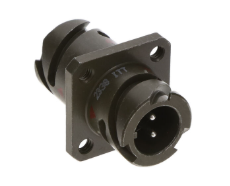A stress sensor you can sink your teeth into
A team of engineers at Tufts University have designed dental floss that can detect the stress hormone cortisol in saliva. The goal is to create an accurate, non-invasive tool that can be easily integrated into daily routines.
Why stress detection needs a rethink
Chronic stress has been linked to a wide range of health issues, including high blood pressure, cardiovascular disease, weakened immune function, depression, anxiety, and stroke. Traditional stress measurement tools often rely on expensive equipment, self-reporting questionnaires, or psychiatric evaluations which can induce stress, making an accurate assessment difficult.
Another common example of how a result can become skewed is “white room syndrome”, in which a patient’s blood pressure rises during a visit to a medical facility but is normal when they are in a home setting.
The Tufts research team wanted to design a more accessible, less stressful way to measure physiological stress without disrupting daily life.
An collaborative idea
The floss sensor idea was born out of a cross-departmental effort to understand how “stress and other cognitive states affect problem solving and learning.” The team wanted to create something that wouldn’t cause additional stress, and so the answer was to create something that would fit into a person’s daily routine.
Flossing was the ideal candidate. It’s already embedded in many people’s routines, doesn’t require medical oversight, and can easily collect saliva, where cortisol, a stress biomarker, can be measured.
How it works
The prototype looks much like a standard floss pick: a plastic handle with a taut string between two prongs. As the user flosses, saliva is drawn up by capillary action through a narrow channel and into the handle. There, it travels across electrodes that detect cortisol levels.
This detection is enabled by electropolymerised molecularly imprinted polymers (eMIPs). These are custom-shaped polymer materials created by forming around a specific target molecule – in this case, cortisol. After the template molecule is removed, the polymer retains a shape and chemical 'memory' that allows it to selectively bind with cortisol molecules in saliva.
The method is very adaptable, and once an eMIP mould is created, it can be used to sense other molecules like oestrogen for fertility monitoring, glucose for diabetes management, or even cancer markers. Multiple biomarkers could potentially be detected at once, offering broader insights into health conditions beyond stress, including cardiovascular disease and cancer.

Photo credit: Atul Sharma and Nafize Ishtiaque Hossain
Advantages over traditional biosensors
Unlike conventional biosensors that often depend on antibodies or biologically engineered receptors, eMIP technology allows researchers to respond quickly to new discoveries. A new disease marker can be accommodated by casting a new polymer template – saving both time and cost.
The benefits of this technology
The cortisol detection performance is reportedly comparable to the best sensors currently available or in development. The main advantage of the technology, however, is accessibility. No specialist training is required. And the device could be used at home by anyone.
While it is still under development, Tufts Professor Sameer Sonkusale and colleagues are forming a startup to commercialise the floss sensor. He explained that although blood remains the preferred fluid for diagnostic accuracy, saliva-based markers are well-suited for tracking ongoing conditions.
“For diagnostics, blood is still the gold standard, but once you are diagnosed and put on medication, if you need to track, say, a cardiovascular condition over time to see if your heart health is improving, then monitoring with the sensor can be easy and allows for timely interventions when needed,” he said.







